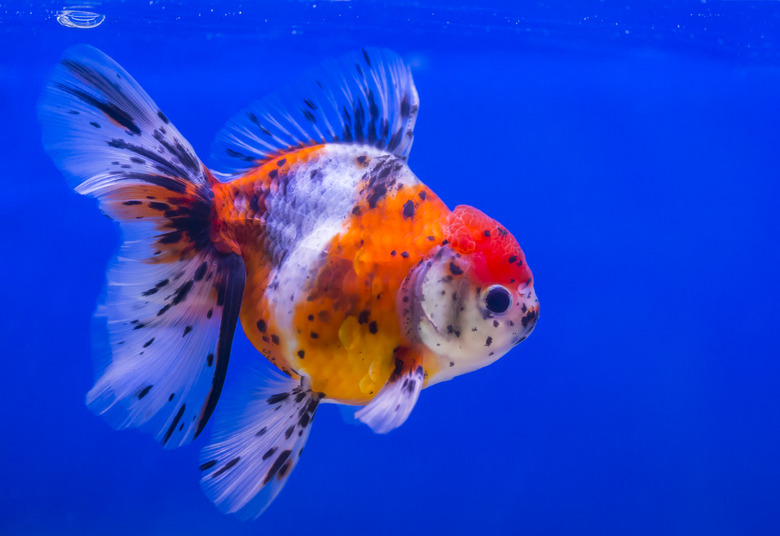Why Do A Goldfish's Fins Turn Black?
It's fun to watch a colorful goldfish meander around his tank, and many people find watching fish quite soothing, It's sometimes difficult, however, to know whether you're keeping your goldfish happy and healthy. Your fish can't tell you if something is wrong, so you'll need to watch him closely for signs of trouble and fix problems quickly. Black spots on your goldfish are one of the trouble signs for which you should look.
My goldfish is changing color to black
My goldfish is changing color to black
Black spots on a goldfish's fins and body may not be a problem at all. New goldfish enthusiasts frequently express surprise when they learn that goldfish can naturally change colors. Your fish has melanin in her scales just like people do in their skin. Her color may change as her cells produce more or less of this natural chemical, and she could turn completely black or develop black patches. This type of color change happens slowly over time. If your fish was fine yesterday but has black spots today, something else is going on. If the darkening occurs over time, however, it's probably nothing about which to worry.
If you want to stop the color change or test the theory that your fish isn't ill, add more color to her aquarium. Goldfish tend to turn black or darken when they're kept in dimly lit tanks with a minimalist decorating style. Adding better lighting, colored aquarium stones, and vibrant decorations can change your goldfish back to her original color or make her even brighter than she used to be.
Check your ammonia levels
Check your ammonia levels
If your goldfish is turning black, use a test kit to check the ammonia levels in your tank right away. When the ammonia levels in a fish tank get too high, it burns the fish. The black you see on your fish's fin is similar to a scab and indicates that your fish is healing himself. This is good news, but you still need to reduce the ammonia level in the tank quickly. Ideally, you should strive to eliminate all of it. While you may always have some, there isn't a lot of wiggle room on this one. Fish start dying at ammonia levels of 0.2 milligrams per liter of water. To drop high ammonia levels in a hurry, perform a partial water change, clean and unclog the filter, and drop a few store-bought ammonia-reducing pellets into your tank.
To keep your ammonia levels under control going forward, you'll need to know what causes ammonia in the first place. Ammonia comes from the respiration of the fish themselves, fish waste, decaying plant material, and uneaten food as it decays. You can resolve two of these issues by using only fake plants in your aquarium and avoiding overfeeding. If you do notice uneaten food in your aquarium, remove it promptly. Getting a bigger tank and filter system will also help, especially if your tank is overcrowded. Add more aeration to the tank as well since this helps break up the ammonia.
If the ammonia in your tank is high, you may notice symptoms other than just black goldfish fins. Watch for tired fish resting on the bottom of the tank, mucous secretions on the fish, and a loss of appetite. Some fish will start going to the surface of the tank to breathe when the ammonia levels climb, and others may swim erratically.
It could be parasites
It could be parasites
Although rare, it's possible that your goldfish is playing host to a parasite. There is a parasite that can burrow into a fish and lay its eggs there, causing the area to turn black. This parasite often hitches a ride on snails, so it's more likely to be the culprit if your goldfish has snails as tank mates. To resolve the issue, remove the snails from the tank. If they were the problem, your goldfish will get better in a month or two. If you don't want to wait, visit the pet store for an aquatic parasite treatment.
